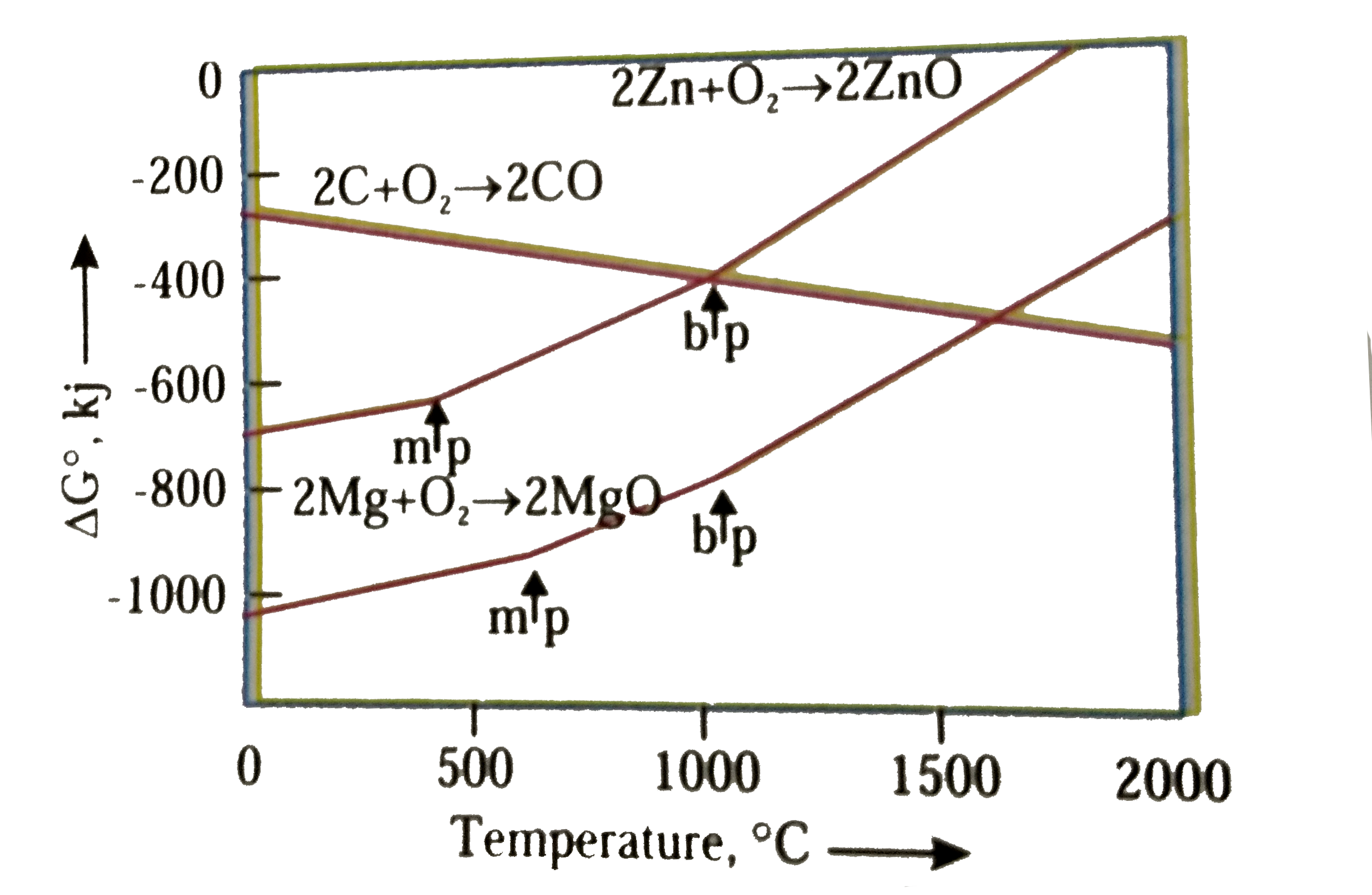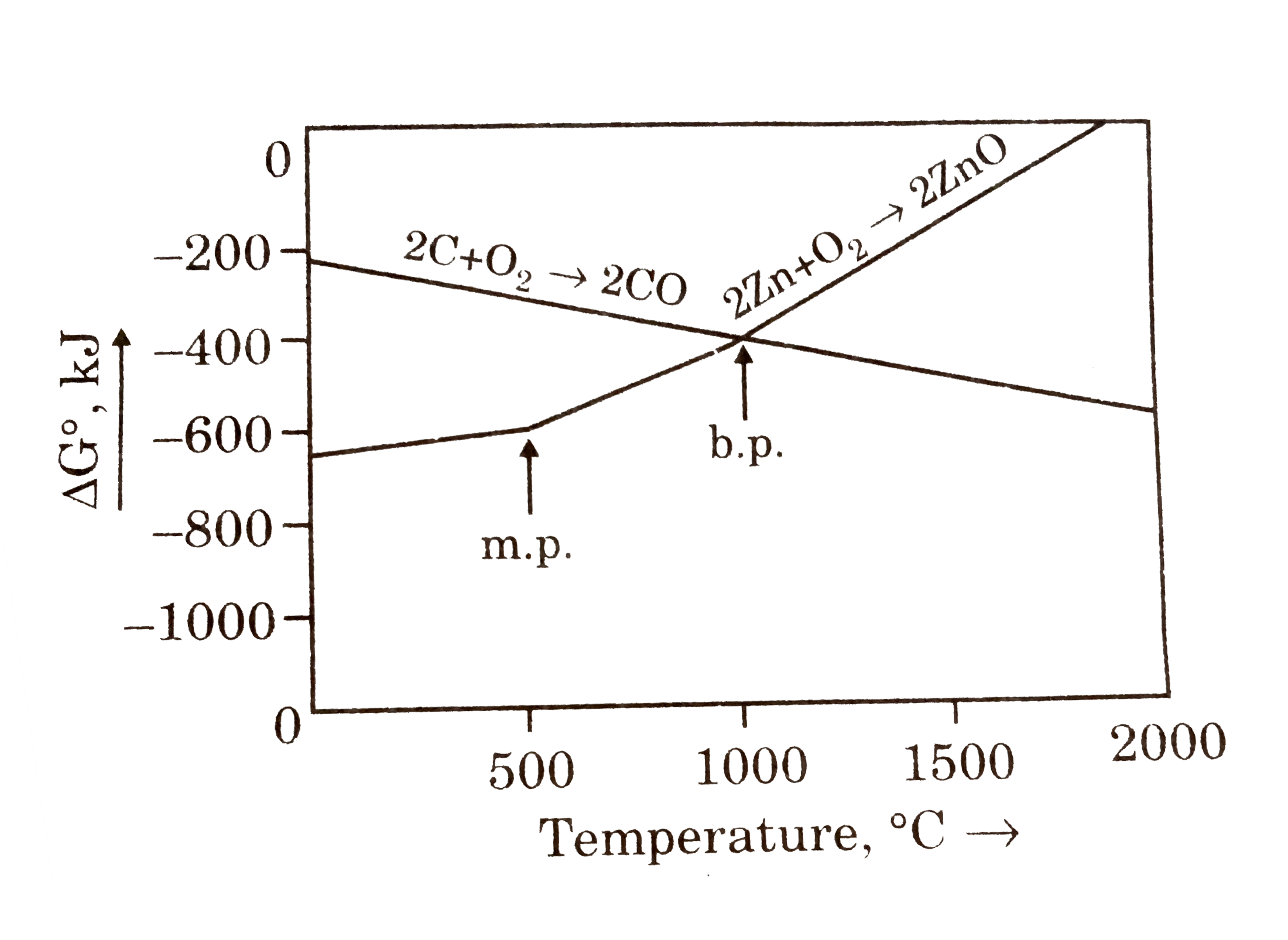
The points noted by arrows are melting and boiling points of the metal zinc and magnasium. ΔG0 as a function of temperature for some reaction of extractive metallurgy.
At 1000∘C, which reaction is spontaneous to a maximum extent
A
MgO+C→Mg+CO
B
ZnO+C→Zn+CO
C
MgO+Zn→Mg+ZnO
D
ZnO+Mg→Zn+MgO
Text Solution
The correct Answer is:b
|
Updated on:21/07/2023
Similar Practice Problems
- Question 1 - Select One
Question given below are based on the given diagram of extractive metallurgy.

The point noted by arrow are the melting and boiling points of the metals zinc and magnesium. ΔG∘ as a function of temperature for some reaction of extractive metallurgy.
To make the following reduction process spontaneous, temperature should be:
ZnO+C→Zn+COA<1000&(∘)CB>1000∘CC<500∘CD>500∘C but <1000∘C - Question 1 - Select One
Question given below are based on the given diagram of extractive metallurgy.

The point noted by arrow are the melting and boiling points of the metals zinc and magnesium. ΔG∘ as a function of temperature for some reaction of extractive metallurgy.
To make the following reduction process spontaneous, temperature should be:
ZnO+C→Zn+COA<1000&(∘)CB>1000∘CC<500∘CD>500∘C but <1000∘C - Question 1 - Select One
Question given below are based on the given diagram of extractive metallurgy.

The point noted by arrow are the melting and boiling points of the metals zinc and magnesium. ΔG∘ as a function of temperature for some reaction of extractive metallurgy.
To make the following reduction process spontaneous, temperature should be:
ZnO+C→Zn+COA<1000∘CB>1100∘CC>500∘CD>500∘Cbut<1000∘C - Question 1 - Select One

The points noted by arrows are melting and boiling points of the metal zinc and magnasium. ΔG0 as a function of temperature for some reaction of extractive metallurgy.
At what approximate temprature, zinc and carbon have equal affinity for oxygen?A1000∘CB1500∘CC500∘CD1200∘C - Question 1 - Select One
Question given below are based on the given diagram of extractive metallurgy.

The point noted by arrow are the melting and boiling points of the metals zinc and magnesium. ΔG∘ as a function of temperature for some reaction of extractive metallurgy.
At what temperature, zinc and carbon have equal affinity for oxygen?A1000∘CB1500∘CC500∘CD1200∘C - Question 1 - Select One
Question given below are based on the given diagram of extractive metallurgy.

The point noted by arrow are the melting and boiling points of the metals zinc and magnesium. ΔG∘ as a function of temperature for some reaction of extractive metallurgy.
At this temperature ΔG∘ of the reaction is:
ZnO+C→Zn+COA−veB+veCzeroDnothing can be said - Question 1 - Select One
Question given below are based on the given diagram of extractive metallurgy.

The point noted by arrow are the melting and boiling points of the metals zinc and magnesium. ΔG∘ as a function of temperature for some reaction of extractive metallurgy.
At what temperature, zinc and carbon have equal affinity for oxygen?A1000∘CB1500∘CC500∘CD1200∘C - Question 1 - Select One
Questions given below are based on the given diagram for extractive metallurgy.
(iv) At 1100∘C, which reaction is spontaneous to a maximum extent ?AMgO+C→Mg+COBZnO+C→Zn+COCMgO+Zn→Mg+ZnODZnO+Mg→MgO+Zn - Question 1 - Select One
The ellingham diagram for zinc, magnesium and carbon coverting into correspondingoxides is shown below.

At 1100∘C, which reaction is spontaneous to a maximum extent ?AMgO+C→Mg+COBZnO+C→Zn+COCMgO+Zn→Mg+ZnODZnO+Mg→MgO+Zn

